Back in 1989 Bill Sienkiewicz illustrated a deck of cards designed to bring to light some of the sleazier folks that the U.S. government had done deals with. The text on each card was written by Dennis Bernstein and Laura Sydell. I wish there was an updated version covering the last 17 years, but in the meantime I’ve prepared a giant post with the images and text from the pack of cards. (This is an egregious copyright violation, but since these cards have been out of print for more than 15 years, I’m hoping no one will call me on it. If they did, I would–of course–take this down.) This will be a very image-intensive post–as usual, the little pictures are links to the bigger versions.
Here’s the cover from the box:
And this is the “about the creators” text (looking at the current bios for the creators, there has been some interesting career progression since they did this):
DENNIS BERNSTEIN is the Executive Producer of “Undercurrents,” heard daily on WBAI in New York, and nationally on the Pacifica Radio Network. His articles have appeared in The New York Times, The Village Voice, New York Newsday, Spin Magazine, In These Times, Extra!, and others.
LAURA SYDELL has a law degree and is a phi beta kappa graduate of William Smith College. She has reported for National Public Radio’s “All Things Considered”, “Crossroads”, and for the Pacifica Radio Network.
BILL SIENKIEWICZ’s work in Brought to Light has garnered rave reviews from Publisher’s Weekly, The American Library Association Booklist, and The Village Voice. His award-winning artwork can be seen in such comics as Moon Knight, Elektra Assassin, Stray Toasters, and Real War Stories.
And now, the cards themselves:
America’s Allies
01 – THE FRIENDLY DICTATORS
Meet the Friendly Dictators—three dozen of America’s most embarrassing “friends,” a cunning crew of tyrants and corrupt puppet-presidents who have been rewarded handsomely for their loyalty to U.S. interests.
Traditional Dictators seize control through force and often are self-styled “Generals”. Constitutional Dictators hold office through voting fraud or severely restricted elections and are frequently mouthpieces for the military juntas which control the ballot boxes. Both types of dictators are covered here, along with a few tyrannical kings, but don’t look for “enemy” dictators (communists and the like) in this set of cards. These are America’s allies, strange and undemocratic as they may be.
Friendly Dictators often rise to power through bloody CIA-backed coups and rule by terror and torture. Their troops may receive training or advice from the CIA and other U.S. agencies. “Anti-communism” is their common battle cry and a common excuse for political repression. They are linked internationally through extreme right-wing groups such as the World Anti-Communist League (see card 17). Strong Nazi affiliations are typical—some have been known to dress in Nazi paraphernalia and quote from Mein Kampf, while others offer sanctuary for actual Nazi war criminals.
Friendly Dictators usually grow rich, while their countries’ economies go down the drain. U.S. tax dollars and U.S. backed loans have made billionaires of some; others are international drug dealers who also collect CIA paychecks. Rarely are they called to account for their crimes.
02 – MAXIMILIANO HERNANDEZ MARTINEZ
General of El Salvador
“It is a greater crime to kill an ant than a man,” said General Maximiliano Hernandez Martinez, a firm believer in the occult, “for when a man dies he becomes reincarnated, while an ant dies forever.” The official records of Hernandez Martinez’s anti-communist purge of 1932 were removed from El Salvador’s National Library, but the massacres, which left 40,000 peasants dead and wiped out the country’s Indian culture, remain etched on the nation’s collective memory.
A failed uprising organized by El Salvador’s Communist Party founder, Farabundo Marti, six weeks after Hernandez Martinez had seized power in a 1931 coup, sparked the General’s crackdown on “communists.” “Roadways and drainage ditches were littered with bodies,” writes Raymond Bonner. “Hotels were raided; individuals with blond hair were dragged out and killed as suspected Russians. Men were tied thumb to thumb, then executed, tumbling into mass graves they had first been forced to dig.” U.S. warships were stationed off-shore, ready to send in Marines to aid the General in case he ran into serious opposition.
Hernandez Martinez was run out of the country in 1944, but his memory was celebrated as recently as 1980, when the Maximiliano Hernandez Martinez Brigade carried out a series of death-squad assassinations of prominent Salvadoran leftists. Farabundo Marti, killed during the purge, has also left a legacy: the rebels currently fighting the U.S. backed government of El Salvador call themselves the FMLN, the Farabundo Marti Liberation Front.
03 – FULGENCIO BATISTA
President of Cuba
Cuban Army Sergeant Fulgencio Batista first seized power in a 1932 coup. He was FDR’s handpicked dictator to counteract leftists who had overthrown strongman Gerardo Machado, “the Butcher.” Batista ruled for several years, then left for Miami, returning in 1952 just in time for another coup, against elected president Carlos Prio Socorras. His new regime was recognized in a flash by President Eisenhower.
Under Batista, U.S. interests flourished and little was said about democracy. With the loyal support of Batista, Mafioso boss Meyer Lansky developed Havana into an international drug port. Cabinet offices were brought and sold and military officials made huge sums on smuggling and vice rackets. Havana became a fashionable hot spot where America’s rich and famous clinked cocktails with mobsters.
As the gap between the rich and poor grew wider, the poor grew impatient. In 1953, Fidel Castro led an armed group of rebels in a failed uprising on the Moncada army barracks. Fidel temporarily fled the country and Batista struck back with a vengeance. Freedom of speech was curtailed and “subversive” teachers, lawyers and public officials were fired from their jobs. Death squads tortured and killed thousands of “communists.” Batista was assisted in his crackdown by Lansky and other members of organized crime who believed Castro would jeopardize their gambling and drug trade. Despite this, Batista remained a friend to Eisenhower and the U.S. until he was finally overthrown by Castro in 1959.
04 – RAFAEL LEONIDAS TRUJILLO
President of the Dominican Republic
The U.S. occupied the Dominican Republic in 1916 and created the the National Guard to put Rafael Leonidas “The Chief” Trujillo into power. The fact that Trujillo was court-martialed for kidnapping and rape in 1920 did not impede his rise to power or taint his relationship with the U.S. As dictator of the Dominican Republic for 30 years, Trujillo had a penchant for self-adulation, naming the country’s capital “Ciudad Trujillo” and likening himself to Jesus Christ. He also put his personal stamp on everything. On village water pumps: “Trujillo alone gives us water to drink.” On a home for the aged: “Trujillo is the only one who gives us shelter.”
Trujillo won the 1930 presidential election with more votes than there were registered voters, but as long as he was anti-communist, Washington was happy, so he invoked anti-communism to justify mass deportations, torture and summary execution. Workers who asked for wage increases were labelled “communists” and shot on the spot, as were farmers who tried to stop Trujillo from confiscating their land. He eventually controlled over 80% of the country’s sugar plantations, using slave labor provided by neighboring Haiti to keep profits high, but in 1937 he decided to blame depressed sugar prices on the Haitian workers and massacred 20,000 of them. Trujillo was finally assassinated by the CIA in 1961, after he attempted to have President Romulo Betancourt of Venezuela murdered because of his criticism of Trujillo’s brutal regime. It was only then that the Marine Corps made public the fact that our “ally” Trujillo was a convicted rapist!
05 – GENERAL HUMBERTO BRANCO
President of Brazil
In 1961, Time magazine called Brazil’s domestic politics “confused” and said the country was “also adrift in foreign affairs”. What Time seemed to mean was that Brazilian President Jaao Goulart’s policies were unacceptable to the U.S. Goulart sought to trade with communist nations, supported the labor movement, and had limited the profits multi-nationals could take out of the country. Although high ranking U.S. intelligence personnel such as Defense Attaché (and later Deputy Director of the CIA) Vernon Walters, deny the U.S. took part in the 1964 overthrow of Goulart by General Humberto de Alencar Castello Branco, there is evidence to the contrary. For example, right before the coup, U.S. officials cabled Washington a request for oil for Branco’s soldiers in case Goulart’s troops blew up the refineries.
Branco’s regime was short but brutal. Labor unions were banned, criticism of the President became unlawful, and thousands of “suspected communists” (including children) were arrested and tortured. As in Paraguay, Argentina, and Bolivia (see cards 12, 8, and 6), land was stolen from native Indians and their culture was destroyed. Drug dealers, many of them government officials, were given protection because they maintained “national security interests”. Brazil formed ties with WACL (see card 17) and assisted General Videla in his takeover of Argentina (see card 8). When Branco stepped down in 1967, he left behind a constitution with greatly increased military and executive powers, crippling Brazil’s efforts to restore democracy.
06 – COLONEL HUGO BANZER
President of Bolivia
In 1964, the New York Times wrote of Bolivia: “No country in the Western Hemisphere is more dependent on Washington’s aid and nowhere has the United States Embassy played a more obtrusive role in establishing that fact.” So in 1970, when President Juan Jose Torres nationalized Gulf Oil properties and tin mines owned by U.S. interests, and tried to establish friendly relations with Cuba and the Soviet Union he was playing with fire. The coup to overthrow Torres, led by U.S. trained officer and Gulf Oil beneficiary Hugo Banzer, had direct support from Washington. When Banzer’s forces had a breakdown in radio communications, U.S. Air Force Major Robert Lundin placed the U.S. Air Force radio at their disposal.
Once in power, Banzer began a reign of terror. Schools were shut down as hotbeds of “political subversive agitation provoked by anarchists opposed to the new institutional order,” the Soviet Embassy was closed, and Banzer raised a foreign loan to pay Gulf Oil compensation. Within two years, 2,000 people were arrested and tortured without trial. As in Paraguay, Argentina and Brazil (see cards 12, 8, &5). the native Indians were forced off their land and deprived of tribal identity. Tens of thousands of white South Africans were enticed to immigrate with promises of the land stolen from the Indians. Migration Under Secretary Guido Strauss told the U.N. the goal was to create a “white Bolivia.” When Catholic clergy tried to aid the Indians, the regime, with CIA help, launched terrorist attacks against them, and this “Banzer Plan” became a model for similar anti-Catholic actions throughout Latin America.
07 – ANASTASIO SOMOZA, SR. AND JR.
Presidents of Nicaragua
The Marines invaded Nicaragua in 1912 and stayed until 1933, fighting but never defeating the revolutionary Augusto Sandino. They created the Nicaraguan National Guard and installed Anastasio Somoza Garcia in power. Then Sandino, who had signed a truce and put down his arms, was assassinated by Somoza In 1935, General Smedley Butler, who led the Marines into Nicaragua, said: “I [was] a high class muscle man for big business, for Wall Street and for the banks. In short, I was a racketeer for capitalism…I helped purify Nicaragua for [an] International banking house.” President Franklin Delano Roosevelt put it another way. “Somoza may be a son of a bitch, but he’s our son of a bitch.”
Corruption, torture, and wholesale murder of dissidents continued for 45 years under two generations of Somozas, for after Somoza Garcia was gunned down in the streets in 1956, his son Anastasio Somoza Debayle took control. The Somozas plundered Nicaragua and became millionaires. The younger Somoza, “the vampire dictator,” made $12 million a year buying the blood of his people and selling it abroad at a 300% mark-up, but his biggest single rip-off occurred in 1972 after an earthquake killed and wounded hundreds of thousands of Nicaraguans: Somoza had his National Guard seize $30 million in international relief supplies and sold them to the highest bidder. Near the end of his reign, he aerially bombed his own capital to stay in power, but he was overthrown in 1979 by a rebel group who called themselves the Sandinistas, after the revolutionary hero his father had slain.
Senior: More info at Wikipedia
Junior: More info at Wikipedia
08 – GENERAL JORGE RAFAEL VIDELA
President of Argentina
Soon after the coup that brought him to power in 1976, General Jorge Rafael Videla began Argentina’s dirty war. All political and union activities were suspended, wages were reduced by 60%, and dissidents were tortured by Nazi and U.S. trained military and police. Survivors say the torture rooms contained swastikas and pictures of Hitler, Mussolini and Franco. One year after Videla’s coup, Amnesty Inter-national estimated 15,000 people had disappeared and many were in secret detention camps, but although the U.S. press admitted human rights abuses occurred in Argentina, Videla was often described as a “moderate” who revitalized his nation’s troubled economy. Videla had a good public relations firm in the U.S., Deaver and Hannaford, the same firm used by Ronald Reagan, Taiwan, and Guatemala Not surprisingly, his Economics Minister, Jose Martinez de Hoz, spoke, at Deaver’s request, on one of President Reagan’s national broadcasts in order to upgrade Argentina’s reputation.
Videla also received aid from WACL, the World Anti-Communist League (see card 17), through its affiliate, CAL (Confederation Anticomunista Latinoamericana). CAL sent millions of dollars to Argentina from sources such as the Italo-Argentine Masonic Lodge P-2, an outgrowth of old U.S. anti-communist alliances with the Italian drug mafia. As part of its WACL affiliation, Argentina trained Nicaraguan contras for the U.S. Videla left office in 1981, and after the Falklands Crisis of 1982 he and his cohorts were tried for human rights abuses by the new government.
09 – GENERAL EFRAIN RIOS MONT
President of Guatemala
“A Christian has to walk around with his Bible and his machine gun,” said born-again General Efrain Rios Mont, military ruler of Guatemala from March 1982 to August 1983. Rios Mont was one in a long series of dictators who ran Guatemala after the Dulles brothers and United Fruit, backed by the CIA, decided that elected President Jacobo Arbenz held the country “in the grip of a Russian-controlled dictator-ship” and overthrew the country’s constitutional democracy in 1954. The succession of corrupt military dictators ruled Guatemala for over 30 years, one anti-communist tyrant after another receiving U.S. support, aid, and training.
After the 1982 coup that brought Rios Mont to power, U.S. Ambassador Frederic C. Chapin said Guatemala “has come out of the darkness and into the light.” President Reagan claimed Mont was given “a bum rap” by human rights groups, and that he was cleaning up problems inherited from his predecessor, General Romeo Lucas Garcia. Ironically, Garcia had given $500,000 to Reagan’s 1980 campaign, and his henchman, Mario Sandoval Alarcon, the “Godfather” of Central American death squads, was a guest at Reagan’s first inaugural celebration. Sandoval proudly calls his National Liberation Movement “the party of organized violence.”
Mont simply moved Garcia’s dirty war from urban centers to the countryside “where the spirit of the lord” guided him against “communist subversives,” mostly indigenous Indians. As many as 10,000 Indians were killed and over 100,000 fled to Mexico as a result of Mont’s “Christian” campaign.
10 – ROBERTO SUAZO CORDOVA
President of Honduras
Honduras was the original “Banana Republic”, its history inextricably intertwined with that of the U.S.-based United Fruit Company, but in 1979, when Anastasio Somoza was overthrown in Nicaragua (see card 7), Honduras got a new nickname: “The Pentagon Republic.” In 1978 Honduras received $16.2 million in U.S. aid; by 1985 it was getting $231.1 million, primarily because President Suazo Cordova, working with U.S. Ambassador John Dmitri Negroponte and Honduran General Gustava Alvarez, allowed Honduras to became a training center for U.S. funded Nicaraguan contras. General Alvarez, who according to Newsweek, “doesn’t care if officers are thieves, as long as they are virulent anti-communists”, assisted in training programs and founded a special “hit squad”, the Cobras. Victims of the Cobras were stripped, bound, thrown into pits and tortured. The Reagan Administration claimed ignorance of these human rights violations, but U.S. advisors have admitted knowledge.
Alvarez, who made enemies among his troops because he pocketed U.S. aid and because he belonged to the “Moonies,” a far-right South Korean religious cult, was over-thrown by the military in 1984. Suazo’s ties to Alvarez cost him his bid in the next election, but death squad activity and U.S. aid to Honduras continue. Many high ranking government and military personnel during and after Suazo’s term were drug traffickers, and although the U.S. government denies knowledge or this, there is evidence to the contrary. In fact, the U.S. embassy was renting space from known drug dealers.
11 – FRANCOIS & JEAN CLAUDE DUVALIER
Presidents-For-Life of Haiti
In 1957 Francois “Papa Doc” Duvalier became Haiti’s President-For-Life, establishing a strategic relationship with the U.S. that lasted into the 1970s, when he was succeeded by his son Jean Claude “Baby Doc” Duvalier. During their 30 year rule, 60,000 Haitians were killed and countless more were tortured by the Duvaliers’ Tonton Macoutes death squads, but in 1969, after 13 years of murderous rule by Papa Doc, U.S. Ambassador Clinton Knox shook hands with the dictator and called for increased aid to Haiti. Papa Doc made him an honorary Tonton Macoute. While Haiti became the poorest country in the Western Hemisphere, the Duvaliers enriched themselves by stealing foreign aid money. In 1980, for instance, the International Monetary Fund granted Haiti a $22 million budget supplement. Within weeks, $16 million was “unaccounted for,” presumably in Baby Dods bank account.
Papa Doc liked to compare himself to Christ and adapted the Lords Prayer to read “Our Doc who art in the National Palace for life, hallowed be Thy name by present and future generations.” Baby Doc, on the other hand, made Haiti into a trans-shipment point for Colombian cocaine. He allegedly let his father-in-law use Haiti’s national airline to ship drugs to the U.S., and his brother-in-law was convicted of cocaine trafficking by a Puerto Rican court. Nevertheless, as long as Papa and Baby Doc were anti-communists, they could do no wrong in the U.S. government’s eyes. Their regime finally ended in 1986, when Baby Doc fled angry mobs of Haitians for the comfort of a Parisian villa, where he now resides.
Francois: More info at Wikipedia
Jean-Claude: More info at Wikipedia
12 – ALFREDO STROESSNER
President-For-Life of Paraguay
Alfredo Stroessner came to power in 1954, but European correspondents who visited Paraguay during his rule used the term the “poor man’s Nazi regime” to describe the Paraguayan government. The parallels may have been more than a coincidence, for many Nazi war criminals, such as Joseph Mengele, had settled there with Stroessner’s blessing
From the Nazis the Paraguayan military learned the art of genocide. The native Ache Indians were in the way of progress, progress represented by American and European corporations who planned to exploit the nation’s forests, mines, and grazing lands. The Indians were hunted down, parents killed, and children sold into slavery. Survivors were herded into reservations headed by American fundamentalist missionaries, some of whom had participated in the hunts.
Between 1962 and 1975, Paraguay received $146 million in U.S. aid. Paraguayan officials seemingly wanted more, however, for in 1971, high ranking members of the regime were implicated in the Marseilles drug ring, with Paraguay their transfer point for shipments from France to the U.S. In the 1980s America finally condemned Paraguayan civil rights abuses and drug trafficking. Stroessner still looked as if he’d be dictator for life, but in 1988 one of his closest generals, Andres Rodriguez, a known drug dealer, took over after a coup. Rodriguez promised to restore democracy, and President Bush called the 1989 elections “a democratic opening”, but opponents declared them “a massive fraud.” Rodriguez’s Colorado party won 74% of the vote.
13 – GENERAL AUGUSTO PINOCHET
President of Chile
On July 2, 1986, 18 year old Carmen Gloria Quintana was walking through a Santiago slum when she and photographer Rodrigo Rojas were confronted by government security forces. According to eyewitnesses, the two were set ablaze by soldiers and beaten while they burned. Their bodies were then wrapped in blankets and dumped in a ditch miles away. Witnesses who spoke out about what they saw were beaten and arrested. Such events are not unusual since “Captain General” Augusto Pinochet seized power from democratically elected President Salvador Allende in 1973, and buried Chile’s 150 year old democracy. “Democracy is the breeding ground of communism”, says Pinochet.
The bloody coup, in which Allende was assassinated, was carefully managed by the CIA and ITT, according to the Church Committee report. Tens of thousands of Chileans have been tortured, killed and exiled since then, according to Amnesty International. A U.S. congressional delegation was told by inmates at San Miguel Prison that they had been tortured in various ways including, “the application of electric shock, simultaneous blows to the ears, cigarette bums and simulated executions by firing squads.” Despite Chile’s bad human rights record, the U.S. government continues to support the dictatorship through international loans. Even the state-sponsored car-bomb assassination of Chile’s former Ambassador to the U.S., Orlando Letelier did not convince the U.S. to sever ties with Pinochet. Chileans called for his removal in a 1988 election but still he rules.
14 – GENERAL MANUEL NORIEGA
Chief of Defense Forces, Panama
For years the U.S. command post for covert Latin American operations has been located in the Canal Zone. A series of figure-head presidents, including those backed by General Manuel Noriega, increasingly involved Panama in U.S. intelligence operations. Noriega was once a good friend to the U.S. George Bush first met with him in 1976 when Bush was CIA Director and then-Colonel Noriega headed Panamanian Intelligence while collecting $100 thousand a year as a CIA asset. “I can’t deny that I met with him,” says Bush, “The United States had a certain relationship with the head of the Panamanian Defense Forces.” That “certain relationship” persisted even after Noriega’s drug dealing was revealed by a 1975 DEA investigation. During the Reagan era, Noriega collaborated with Oliver North on covert actions against Nicaragua, training contras and using Panama as a trans-shipment point for CIA supported operations that flew weapons to the contras and cocaine into the U.S.
Eventually Noriega refused to participate in further anti-Sandinista actions. In 1987, a Miami grand Jury indicted him for drug-trafficking and the CIA unsuccessfully tried to destabilize his regime. Noriega struck back, warning George Bush that he had information which could change the course of the 1988 U.S. presidential elections. As he quaintly told reporters, “I got George Bush by the balls.” The CIA then backed off, but Panama’s fraudulent 1989 presidential elections, which Noriega “annulled,” citing CIA interference, led Bush to renew attempts to unseat his one-time ally.
15 – VINICIO CEREZO
President of Guatemala
According to Amnesty International, “arbitrary arrest, torture, ‘disappearance’ and political killings were everyday realities” for Guatemalans during decades of U.S. financed military dictatorship. In January 1986, Christian Democrat leader Vinicio Cerezo was elected President and said he had “the political will to respect the rights of man,” but it didn’t take long to find out that his political will was irrelevant in the face of Guatemala’s well-oiled military machine. Hopes for change were dashed when Cerezo announced he would not nullify the “self-amnesty law” declared on the eve of his election by General Oscar Melia Victores, establishing amnesty for all past military offenses committed from General Efrain Rios Mont’s coup in 1982 (see card 9) through the 1986 elections.
Although Ronald Reagan’s State Department asserted “there has not been a single clear-cut case of political killing,” within months of Cerezo’s inauguration opposition leaders attributed 56 murders to security forces and death squads, while Americas Watch claimed that “throughout 1986, violent killings were reported in the Guatemalan press at the rate of 100 per month.” Altogether, Americas Watch says, tens of thousands were killed and 400 rural villages were destroyed by government death squads during Reagan’s term in office.
Colonel D’Jalma Dominguez, former army spokesman, explains: “For convenience sake a civilian government is preferable, such as the one we have now. If anything goes wrong, only the Christian Democrats will get the blame. It’s better to remain outside: The real power will not be lost.”
16 – ALFREDO CRISTIANI
President of El Salvador
General Hernandez Martinez’s 1932 anti-communist purge (see card 2), was carried out on behalf of El Salvador’s rich coffee oligarchy, the so-called “Fourteen Families.” The country’s new president, Alfredo Cristiani, is a member of those same “Fourteen Families,” and his ARENA party is linked to brutalities that surpass those of Hernandez Martinez. Cristiani, former leader of a motorcycle gang called the “Bad Boys,” is a perfect figure-head: photogenic, moderate-sounding, schooled in Washington D.C., and indebted to the military for his power. As puppet president, he yields to ARENA’s founder, Roberto D’Aubuisson, whom former U.S. Ambassador Robert White calls a “pathological killer.”
D’Aubuisson, a former cashiered Army Major with ties to Jesse Helms and the American right, studied unconventional warfare in the U.S. and Taiwan. He once told European journalists, “You Germans were very intelligent. You realized that the Jews were responsible for the spread of communism, so you killed them.” According to D’Aubuisson, even “the Christian Democrats [Ex-President Jose Napoleon Duarte’s party] are communists,” and Jesuit priests, are “the worst scum” of all. Secret U.S. Stale Department cables indicate D’Aubuisson “planned and ordered the assassination of the late Arch-Bishop Oscar Arnulfo Romero,” and It’s believed D’Aubuisson, Inspired by Mario Sandoval Alacorn, (see card 9), was behind the White Warriors Union (UGB), whose slogan was “Be patriotic—kill a priest.” Since 1980, 70,000 civilians have been killed by the Salvadoran military and the death squads.
17 – CHIANG KAI-SHEK
President of Taiwan
The Chinese civil war pitted Mao Tse-Tung’s Communists against Chiang Kai-Shek’s Nationalists. The U.S. backed Chiang, but when he couldn’t do the job they also supported Japanese troops fighting the Communists, even before WWII had ended. Hated for his wanton cruelty, corruption, and decadence, Chiang did not enjoy the support of the Chinese people; entire divisions of the Nationalist army defected, so on a few occasions, Chang hired gangsters to get rid of leftist elements. Nevertheless, Chiang was defeated and fled to the island of Formosa (Taiwan). A presidential commission appointed by Harry Truman reported after Chiang’s arrival there that his forces “ruthlessly, corruptly, and avariciously imposed their regime” on the population. Under Nationalist rule, 85% of the population was disenfranchised, but the onset of the Korean War and the anti-communist hysteria of the McCarthy era led the U.S. to declare that the tiny island represented the real government of China. The U.S. was crucial in keeping mainland China out of the U.N. until 1971.
Chiang gave the World Anti-Communist League, an international organization with links to Nazis, drug smugglers and the CIA, its first home, permitting WACL members to use a military academy there to train troops for Latin American military coups. President Carter tried to cut U.S. ties to WACL, but Ronald Reagan received campaign funds from the group and WACL became involved with training and supplying contras in Argentina and Taiwan. Chiang Kai-Shek died in 1975, but many of his policies continue in Taiwan.
18 – NGO DINH DIEM
President of South Viet Nam
Ngo Dinh Diem oppressed the Vietnamese people so badly that many of them turned to the communists for protection from his ruthless rule. Even President Eisenhower admitted that “had elections been held, possibly 80% of the population would have voted for Ho Chi Minh [the communist leader].” Yet Diem, who had once lived in the U.S., had connections in Washington who liked his anti-communism. He founded the Can Lao Party (CLP), a secret police force over-seen by his brother, Ngo Dinh Nhu, and Nhu’s wife, Madame Nhu. The three (whom one U.S. official called “three victims of blank wall irrationality”) were notorious for their Ineptitude and cruelty, and, according to Brigadier General Edward Lansdale, the CLP was not their idea; it “was originally promoted by the U.S. State Department” to rid the country of communists.
Diem alienated urban professionals by suppressing all opposition to his regime. He alienated peasants by cancelling their age old local elections, forcing them off their land, and moving them into “agrovilles” surrounded by barbed wire, which even U.S. officials conceded bore a striking resemblance to “concentration camps.” Ultimately, he angered his own military officers because he promoted on the basis of loyalty, not merit. In an effort to keep Diem in power, the U.S. tried to persuade him to make political reforms. He refused, so they persuaded him to make “military reforms.” But when Diem was finally overthrown and assassinated in 1963, none of his generals rose to defend him. Nor did the U.S., which, after 8 years, had finally realized that Diem wasn’t popular.
19 – PARK CHUNG HEE
President of South Korea
Free and open expression has not come easily to South Koreans. Beatings, torture and execution of the regime’s political opponents have been a way of life since the Korean War. The tenure of former President Park Chung Hee, who came to power in a 1961 military coup, exemplifies the kind of leader South Koreans have been forced to endure.
Parks virulent anti-communism won him U.S. support, although Article Ten of his Anti-Communist Law provided for prize-money to be awarded “to a person who has inevitably killed an offender [of the Law] or has forced an offender to commit suicide.” The water torture, which leaves no physical marks on the victim, was a favored technique of Park’s security forces. Cold water was forced up the nostrils through a tube while a cloth was placed in the victim’s mouth to prevent breathing. Many anti-communist “interrogations” were run by the KCIA, a U.S. creation modeled after the American CIA. One victim told Amnesty International, “I was taken to KCIA headquarters, my hands tied together, and I was tied to a chair. I was not allowed to have any sleep. At night, they would drag me to the basement where they would beat me with a long, heavy stick, and jump on me…They were trying to make me confess that I was a spy.”
Despite such brutal behavior, the U.S. has maintained a first-rate strategic relationship with South Korean, providing successive repressive regimes with extensive U.S. aid. Park Chung Hee was assassinated by the KCIA in 1979, but South Korea is still a nation troubled by lack of human rights.
20 – FERDINAND MARCOS
President of the Philippines
Ferdinand Marcos began his career with a bang: At age 21, convicted of gunning down Julio Nalundasan, his father’s victorious opponent in the Philippines’ first national elections, he went to prison. He was later released by a Supreme Court Justice who, like Marcos and his father, was a Nazi collaborator. Despite Marcos’s record as murderer, fake WW II hero, and Nazi agent, he was elected Philippines President in 1965.
Under Marcos, the Philippine national debt grew from $2 billion to $30 billion (and his wife Imelda’s shoe collection grew along with it to over 1,000 pairs), but U.S. corporations in the Philippines prospered, perhaps explaining why the U.S. didn’t protest Marcos’s imposition of martial law in 1972.
The Carter Administration engineered an $88 million World Bank loan to Marcos, increased military aid to him by 300% and called him a “soft dictator.” But a 1976 Amnesty International report identified 88 government torturers and stated that alleged subversives had their heads slammed into walls, their genitals and pubic hair torched, and were beaten with clubs, fists, bottles and rifle butts.
By 1977, the armed forces had quadrupled and over 60,000 Filipinos had been arrested for political reasons, yet in 1981, Vice President George Bush praised Marcos for his “adherence to democratic principal and to the democratic processes.” Marcos was defeated and his rule overthrown in 1986 by the followers of Corazon Aquino, widow of an assassinated opposition leader. Ferdinand and Imelda fled to Hawaii, only to be indicted in 1988 for fraud and tax evasion.
21 – MOHAMMED ZIA UL-HAQ
President of Pakistan
In 1979, when General Mohammed Zia Ul-Haq executed his elected predecessor, Zulfigar Ali Bhutto, and declared martial law, drugs were unknown in Pakistan, but by 1984 Pakistan was furnishing 70% of the world’s high grade heroin. That same year, George Bush addressed a group of Pakistani officials and praised the government of President Zia for its anti-narcotics program. However, among the guests listening to “Vice” President Bush were many high-ranking officials with links to one of the most lucrative heroin syndicates in the world. Although the U.S. government had some very capable drug enforcement agents in Pakistan, they did not break even one narcotics case there. A senior Pakistani narcotics officer said he had concluded the U.S. was unwilling to press for arrests that might embarrass a government so closely tied to Washington.
Former Secretary of State Henry Kissinger called Pakistan a “frontline state” defending “free people everywhere.” That may explain why, despite its unsavory record of jailing and torturing dissidents, Pakistan under Zia was the fifth largest recipient of U.S. aid, receiving over $3 billion in 1982, of which over half was for weapons. Zia eventually lifted martial law and called for general elections in 1985. However, many of his outspoken opponents were jailed during the elections and for several days afterward.
Zia died in a mysterious plane crash in 1988 and the political party of his predecessor then formed a government behind the late President Bhutto’s daughter Benazir Bhutto.
22 – SIR HASSANAL BOLKIAH
The Sultan of Brunei
To illegally fund what they referred to as the “Democratic Resistance” in Nicaragua, Oliver North and Former Assistant Secretary of State Elliot Abrams solicited funds from several authoritarian regimes, including Taiwan (see card 17), South Korea (see card 19) and the more obscure Sultanate of Brunei Darussalam. Sir Hassanal Bolkiah, the Sultan of Brunei, the world’s richest monarch, was indeed generous to the Contras—to the tune of $10 million—but clearly not because of any commitment to democracy in Nicaragua or anywhere else, for Brunei is a monarchial dictatorship, under a State of Emergency since 1962. The Sultan’s generosity to the CIA also includes allowing Brunei to be the CIA’s ears on the explosive Malaysian-Indonesian border. Not unexpectedly, therefore, his Royal Highness was involved with the infamous Nugan Hand Bank of Australia, a 1960s-70s CIA front for South East Asian drug operations and money laundering. In fact, according to a secret 1978 memo, Nugan Hand submitted a proposal to “provide His Highness the Sultan with a bank structure and depository system which he alone can control should any change of government take place…”
The Sultan lives in a new palace that may have cost as much as a billion dollars, while over 90% of the his subjects live in abject poverty. Those who protest such inequities don’t fare well with the authorities. According to Amnesty International, Brunei’s jails hold “at least five prisoners of conscience who have spent 25 years in detention without having been convicted of any crime.”
23 – GENERAL SITIVENI RABUKA
Commander, Armed Forces of Fiji
On April 30th, 1987, General Vernon P. Walters, the CIA’s “typhoid Mary” of coup making, slipped into Fiji. Two weeks later, General Sitiveni Rabuka stormed the Fijian Parliament and arrested the newly elected Prime Minister, Dr. Timoci Bavadra. Bavadra’s fledgling Labor Party had just defeated Fiji’s pro-U.S. puppet Prime Minister, Ratu Sir Kamese Mara, and although Bavadra’s support for a nuclear-free South Pacific was welcomed by the the regional populace, “a nuclear free zone would be unacceptable to the U.S., given our strategic needs,” said former U.S. Ambassador to Fiji, William Bodde, Jr., who added, “The U.S. must do everything possible to counter this movement.” Indeed, it appears it did just that. Thirty-two days after his electoral victory, Dr. Bavadra was overthrown by the pro-nuclear General Rabuka. “We’re kinda delighted,” said one Pentagon spokesman after the coup. “All of a sudden our ships couldn’t go to Fiji, and now all of a sudden they can.”
Once in control, General Rabuka quickly allied himself with some of the most brutal regimes in the world. “Military dictators seem to like other military dictators,” says deposed Fijian Prime Minister Bavadra. “It did not take long for our illegal rulers to establish strong ties with Indonesia, Taiwan, and South Korea.” Under General Rabuka’s U.S. supported police state, Amnesty International has reported, for the first time in Fijian history, cases of illegal detention and torture. “What we are seeing” says Fijian political scientist James Anthony, “is the Latinizatlon of the Pacific.”
24 – GENERAL SUHARTO
President of Indonesia
Indonesia is a totalitarian state and its uncontested ruler for over 20 years, General Suharto, is one of the most brutal dictators in history. After a CIA organized coup brought him to power in 1965, Suharto, who had already collaborated with Dutch colonialists and Japanese occupiers, decided to purge every last “communist subversive from Indonesian soil.” General Nasution, a former dose associate of Suharto, called for the extermination of three million Indonesian communist party members.
CIA point man Colonel Sarwo Eddie personally supervised the murderous purge. Paratroopers would arrive in a region with a list of “subversives” and provide it to local vigilante groups. Using machetes and other crude weapons, the vigilantes would hack the alleged subversives to death. Entire populations of towns and villages were herded to central locations and massacred. Children would be asked to identify “communists” who would then be executed on the spot. In addition to the half million people who were killed outright after the coup, another 750,000 were arrested and tortured. Ultimately, one million people died in one of the most savage mass slaughters of modern political history.
Ironically, the New York Times reported in December 1965, two months after the purge began, that “from an American viewpoint” Suharto’s new government in Indonesia “represents a positive achievement.” Apparently so, for the U.S. continues to this day to train and arm the Indonesian military with the latest high-tech equipment.
25 – HALIE SELASSIE
Emperor of Ethiopia
Emperor Halie Selassie was deeply distressed when the Italians conquered Ethiopia in 1935. But that may have been because the Italians had shot the 30 pet lions that roamed the grounds around his hill top palace. In the end, Selassie may have been a better king to the animals of Ethiopia than to its people; in 1973, during the height of a drought in which 200,000 Ethiopians died of starvation, Selassie was seen feeding strips of beef to his Great Danes.
Admittedly, Selassie was a fairer ruler than many of those around him. For example, as a young provincial governor, he only took 50% of his peasants’ crops while other governors were taking 90%, and in the 1950s as few as 100 political prisoners were tortured in his jails at one time. But under his long rule, Ethiopia remained in the dark ages. Just before his overthrow in 1974, the annual per capita income was $90, the literacy rate was 7% and Ethiopia was the poorest nation in Africa.
Under Selassie, Ethiopia received more U.S. aid than any other African country and Washington purchased a $2 million yacht for the Emperor. When Selassie faced an uprising in the province of Eritrea, the U.S. sent advisors and arms to help him smash the revolt. In return for our support, Selassie provided the United States with a naval base in the Red Sea and a place for a strategic communications station.
Selassie’s kindness to his animals was his downfall; he was overthrown when photos of him feeding his dogs during the 1973 famine were circulated among his outraged troops.
26 – IAN SMITH
Prime Minister of Rhodesia
Ian Smith promised the whites who elected him Prime Minister of Rhodesia in 1962: “If in my lifetime we have an African [black] nationalist government in power…then we have failed in the policy I believe in.” Smith planned to keep his promise. To choke out bands of black guerrilla fighters, Smith rationed food for Africans, whom he believed were feeding the guerrillas. This cruel measure only served to starve the already undernourished black population. Studies found that over 90% of Rhodesia’s black children were malnourished and nutritional deficiencies were the major cause of infant death. Smith rounded up blacks into concentration camps he called “protective villages.” Believing that ignorant people were less likely to revolt, he cut funding for black education, spending $5.00 on each black child compared to $80.00 on each white child. His all white Parliament passed a law protecting officials who took actions for the suppression of “terrorism,” enabling the police and military to commit atrocities to “suppress terrorism”.
An international trade boycott against Rhodesia arose, but while the U.S. publicly condemned the government, it continued to do business there. In 1971, President Nixon lifted the chrome embargo against Rhodesia at a time when there was a surplus of chrome in the U.S. Blacks were eventually given to right to vote for some officials. but the opposition to Smith’s government grew so strong that he was ultimately forced to renege on his campaign promise. In 1979, Rhodesia became Zimbabwe, a country primarily ruled by blacks
27 – P. W. BOTHA
President of South Africa
P.W. Botha’s first term as President was aptly called a “constitutional coup d’etat” by the South African press. The former Secretary of Defense affixed the structure of government, giving the military and police unprecedented power. To justify this, he pointed to increasingly vocal discontent among South Africa’s disenfranchised blacks, the large number of black states in Africa, and a so-called “growing Marxist” threat in the region. South Africa, he said, was engaged in a “total war” and must develop a “total strategy” to fight the battle.
South Africa’s apartheid regime is quietly supported by the U.S. government, for, despite a U.N. boycott and Congressional efforts to reduce U.S. investment there, Ronald Reagan significantly increased military expenditures in the country. But few Americans realize that Botha’s “total strategy” against blacks also turned his nation into a ruthless aggressor.
When Portugal withdrew from its colonies in Mozambique and Angola (see card 34), Botha, claming he wanted to strengthen capitalism on the continent, financed the Mozambique National Resistance (MNR) against the country’s popular goverment. The MNR, who receive direct training from South Africa, cut off the ears, noses, and limbs, of civilians. After killing their parents and raping young women in front of 10 year old boys, they recruit these boys to fight. “Children do what we want them to do,” they claim. “Adults defect.”
In 1989 P.W. Botha suffered a stroke and later resigned, but South Africa’s “total war” against blacks continues under the aegis of his successor, F.W. De Klerk.
28 – GENERAL SAMUEL DOE
President of Liberia
Perhaps Samuel Doe’s rule is best summed up by his changing physique. When he came to power in a bloody 1980 coup, he was a lean Master Sergeant in military gear; today, he is a fat self-made General in a suit, living off U.S. aid and corporate kickbacks. But while Doe and his cronies live in luxury, the rest of Liberia dwells in squalor. Under his regime, the gross domestic product has decreased by 13%, the country’s health statistics are among the world’s worst, 80% of the population is illiterate, all but one of the opposition parties were forbidden to participate in the 1985 national elections, and those who protest these inequities are jailed or killed.
Doe, a pro-American anti-communist, received $500 million in U.S. aid between 1980 and 1985. When Congress threatened to cut off funds because of Liberia’s flagrant human rights abuses, Doe requested American “financial advice” as a show of good will. The U.S. sent 17 accountants, bank examiners, and economists to assist Doe in balancing his budget, but they realized a difficult task lay ahead when they learned that Doe had purchased over sixty $60,000 Mercedes Benz cars for his government ministers and had given the Liberian soccer team $1 million for winning a match against rival Ghana Ultimately Doe refused to allow the advisors access to records concerning 40% of Liberia’s funds, for this “second budget”, revenues from gasoline and lodging taxes, goes directly into the President’s discretionary bank account. The American advisors returned home in 1989, mission not accomplished, and Samuel Doe remains in office.
29 – MOBUTU SESE SEKO
President of Zaire
When Zaire’s first elected President, Patrice Lumumba, appeared to be getting too close to socialism, U.S. companies feared they might lose control of Zaire’s precious cobalt, copper, and diamonds. So the CIA stepped in, assassinated Lumumba, and replaced him with Mobutu Sese Seko (his name means “Himself Forever”). Although one CIA official commented that “Mobutu is screwing up Zaire pretty good. He simply has no idea how to run a country,” this mercurial leader has been our main man in Central Africa since 1965.
Mobutu has amassed an estimated $5 billion personal fortune at his nation’s expense. He is perhaps the only world leader who could pay his national debt from his own bank account. In fact, there seems to be no division between his pocket and the national treasury. In 1974, when the U.S. sent $1.4 million to assist troops fighting a civil war, Mobutu pocketed the entire sum. And no foreign company sets itself up in Zaire without a trlbute to his honor, “Himself”.
Although Zaire has more resources than most other countries in the region, it is the fifth poorest. Malnutrition takes the lives of 1/3rd of Zaire’s children, and one child out of two dies before age five. But Mobutu has vowed to keep the world safe for democracy and according to Amnesty International, in the name of anti-communism, he imprisons and tortures anyone who threatens his power base, often without trial. While some members of Congress grumble about giving assistance to Mobutu, they continue to reward his work against communism and his warm reception of American corporations.
30 – MOHAMMAD REZA PAHLEVI
Shah of Iran, King of Kings
1953 was a busy year for Allen Dulles. Even as he readied the CIA for a coup in Guatemala (see card 9), his agents were toppling the liberal left government of Dr. Mohammad Mossadeq and paving the way for the Shah of Iran. With Dulles’ encouragement, the Shah made the Iranian people an offer they couldn’t refuse—join his party or go to jail. Thousands who refused to yield were imprisoned or murdered. During regional elections in 1954, the Shah’s agents raided a religious school and hurled hundreds of students to their deaths from the roof. His regime received 100% of the vote that year, in an election which registered more votes than there were voters.
The Shah’s subsequent solidification of power lead to an iron fisted rule enforced by tear and torture. His secret police agency, SAVAK, was created in 1957 and managed by the CIA at all levels of daily operation, including the choice and organization of personnel, selection and operation of equipment, and the running of agents. SAVAK’s torture methods included electric shock whipping, beating, inserting broken glass and pouring boiling water into the rectum, tying weights to the testicles, and the extraction of teeth and nails.
Iran under the Shah became a devoted U.S. ally and a base for spy operations on the border of the Soviet Union. But eventually, the Shah was overthrown in 1978 by an indigenous people’s revolution that held sway until fundamentalist religious leader Ayatollah Khomeini returned to Iran from exile and reasserted his power during the 1979 U.S. hostage crisis.
31 – HUSSAN II
King of Morocco
Like his former ally, the Shah of Iran, King Hussan II of Morocco spares himself no earthly delight. He has seven principal palaces; keeps 260 horses in just one of his many stables; boards most of his camels, ostriches, and zebras with his 945 head of cattle at his 1500 acre dairy farm; and he’s got a couple of harems. Meanwhile, the unemployment rate in Morocco is over 20%, and 85% of the population lives in abject poverty, sheltering in makeshift huts in the country’s increasingly swollen cities.
Citing dubious historical ties, in 1975 Hussan took his nation into a war in the Western Sahara that is costing the country over $1 million a day. Although the International Court of Justice ruled that Morocco has no historical claims to the territory, the U.S. continues to back Hussan diplomatically and financially in his war to annex the area The U.S. also takes an active role in stopping coup attempts against the King. According to one dissident, the CIA gave Hussan a video tape that enabled him to catch the plotters before the fact. The favor was returned when Hussan visited Washington in 1982—he and President Reagan agreed that the U.S. could use Morocco as an emergency base for its planes.
Although Hussan has been less repressive in recent years, members of the opposition are still arrested and tortured. But as his people start to make connections between the rising cost of living and the war in the Sahara, criticism grows, and even the CIA has admitted that Hussan may not be able to keep the lid on dissent much longer.
32 – ADOLF HITLER
Chancellor of Germany
As German bombs fell on LSondon and Nazi tanks rolled over U.S. troops, Sosthenes Behn, president and founder of the U.S. based ITT corporation, met with his German representative to discuss improving German communication systems. ITT was designing and building Nazi phone and radio systems as well as supplying crucial parts for German bombs. Our government knew all about this, for under a presidential order, U.S. companies were licensed to trade with the Nazis. The choice of who would be licensed was odd, though: while Secretary of State Breckinridge Long gave the Ford Motor Company permission to make Nazi tanks, he simultaneously blocked aid to German-Jewish refugees because the U.S. wasn’t supposed to be trading with the enemy.
Other U.S. companies trading with the Third Reich were General Motors, DuPont, Standard Oil of New Jersey, Davis Oil Co., and the Chase National Bank. President Roosevelt did not stop them, fearing a scandal might lead to another stock market crash or lower U.S. morale. Besides, the same companies that traded with Hitler were supplying the U.S., and some corporate leaders threatened to withdraw their support if Roosevelt exposed them. Henry Ford was a good friend of Hitler’s. His book, The International Jew, had inspired Hitler’s Mein Kampf. The Führer kept Ford’s picture in his office. and Ford was one of only four foreigners to receive Germanys highest civilian award. As for Sosthenes Behn, at the end of the war, he received the highest civilian award for service to his country… the United States of America.
33 – GENERAL FRANCISCO FRANCO
President of Spain
General Francisco Bahamonde Franco was not the most popular leader in Spain during the early 1930s. A man of humble origins, he had worked his way up the military ladder fighting colonial wars in Africa. He was hardly charismatic; Hitler once described meeting him as “less pleasurable than having four or five teeth pulled.” But Franco, a staunch conservative, was infuriated when a Republican alliance of socialists, Marxists, and liberals won Spain’s first free elections in 1936. So the General decided to “restore order” by force.
Franco’s Nationalists were losing the civil war, but military support from Hitler, Mussolini, and the U. S. corporations that backed Hitler (see card 32) turned the tide in his favor. Italy and Germany sent 6,000 trucks to Franco’s fascists, but 12,000 were supplied by Ford, General Motors and Studebaker. The U.S. claimed neutrality but didn’t stop these companies from aiding Franco. The failure of the U.S. and other democratic nations to assist Spain’s democratic government was ultimately responsible for Franco’s victory in 1939, and, sadly, American volunteers who had fought for the Republic were branded “premature anti-fascists” and relentlessly persecuted during the U.S. anti-communist hysteria of the 1950s.
Under Franco, all political parties and labor unions were banned, books were burned, and dissenters were tortured and executed. Spain was ostracized by the international community, but the U.S. considered Franco a Cold War ally and sank millions into the country. After Franco’s death in 1975, Spain became a democratic republic once again.
34 – ANTONIO DE OLIVEIRA SALAZAR
Prime Minister of Portugal
Antonio de Oliveira Salazar must have been upset when the Allies won the WW II and he had to take the autographed picture of his hero, Benito Mussolini, off his desk. Salazar worshiped Hitler and Mussolini, but after they lost, he joined the Allies and became a card carrying member of NATO. However, he always kept a piece of fascism alive in Portugal. His secret police, the PIDE, were much like the Gestapo; concentration camps were set up for “enemies of the state;” news organizations were merely propaganda machines; and all schools had their lesson plans carefully monitored by Big Brother. Salazar also kept a little piece of the dark ages alive in Western Europe. In 1970, 30% of the population was illiterate, and the infant morality rate was the second worst in Europe. The Portuguese economy stagnated. Most of the land was held by 5% of the population, the vast majority of Portuguese were working in agriculture, and all union activities were forbidden.
Portugal was the last stronghold of European colonialism. Salazar refused to give up colonies in East Timor, Portuguese Guiana, Mozambique, and Angola He believed the “white man” must bring higher civilization to the “black man”. The U.S. openly backed Portugal’s colonial claims, due to the strategic importance of military bases such as the one in the Portuguese Azores.
Salazar died in 1968, after 40 years in power. His regime fell in 1974, at which point Portugal left Angola, but the U.S. continued to back South African efforts there (see card 27).
35 – GEORGE PAPADOPOULOS
Prime Minister of Greece
When President Lyndon Johnson offered a solution to the Greek Ambassador for the dispute between Greece and Turkey over Cyprus, the Ambassador protested, saying the solution was unacceptable to the Greek parliament and constitution. Johnson replied, “Fuck your parliament and your constitution. We pay a lot of good American dollars to the Greeks. If your Prime Minister gives me talk about democracy, parliament and constitutions, he, his parliament and his constitution may not last very long.” And, indeed, they did not. Three years later, in 1967, a military coup overthrew the freely elected government of Andreas Papandreou.
The coup was headed by CIA employee and ex-Nazi, George Papadopoulos. He had been on the CIA payroll for 15 years when he came to power, and during WW II he was a captain in the Nazi Security Battalions, whose main purpose was to catch members of the Greek Resistance. Henry Tasca, American Ambassador to Greece, called the new regime “the most anticommunist group you’ll find anywhere.” Almost any-one who even said the word “communist” was jailed. During Papadopoulos’s first month in power, 8,000 so-called “leftists” were imprisoned and tortured. Greece was expelled from the European Commission on Human Rights but continued to receive U.S. aid. In return, Greece kept the world safe for democracy by housing U.S. military bases. Papadopoulos was ousted in 1973 after falling from grace with the inner clique that helped him rule. When the entire government tell in 1974, he and his comrades were tried for human rights abuses.
36 – TURGUT OZAL
Prime Minister of Turkey
Turgut Ozal was elected prime minister of Turkey in 1983, after several years of harsh military rule. But while free expression in Turkey has opened up somewhat in recent days, torture and and long prison terms for political opponents and government critics have remained a way of life. In 1988, according to Amnesty International, “thousands of people were imprisoned for political reasons…[and] the use of torture continued to be widespread and systematic.”
Turkey’s torturers are ruthless. Says one victim: “I loosened the blindfold and looked around. The scene was horrific. People were piled up in the corridor waiting their turn to be tortured. Ten people were being led, blindfolded and naked, up and down the corridor and were being beaten to force them to sing reactionary marches. Others, incapable of standing, were tied to hot radiator pipes…A man was forced to watch while his children were tortured and vice versa”
Regardless of the repression that a succession of governments have subjected the country to, U.S.- Turkish relations remain cordial. In the past, U.S. officials have even attributed the torture problem to “the violent nature of the Turkish people.” Retired Turkish General Turgut Sunalp explains it a different way. “There has been, still is and will be torture in Turkey because there is torture everywhere in the world,” he said. But despite its human rights abuses, Turkey can do no wrong in U.S. eyes, for it is one of the CIA’s key listening posts on the Soviet border. Not surprisingly, in 1987, Turkey was the third largest recipient of U.S. aid.

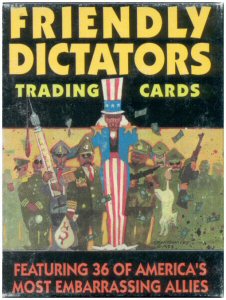
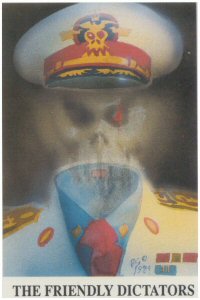
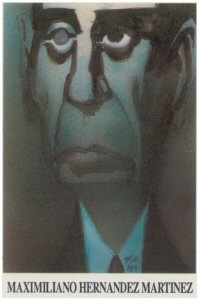
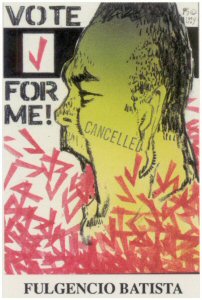
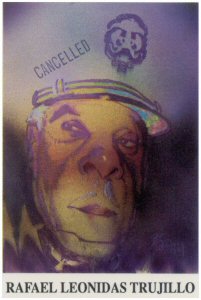
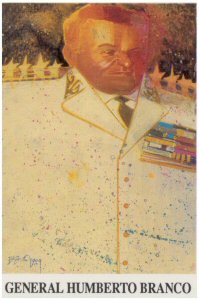
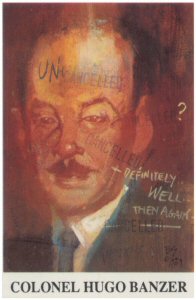
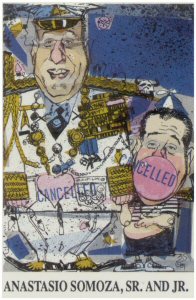
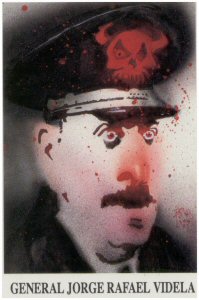
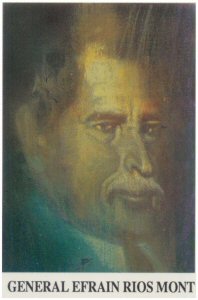
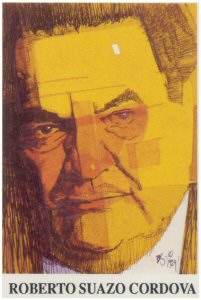
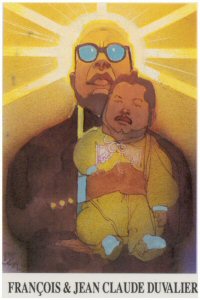
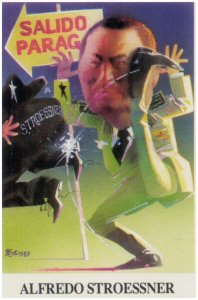
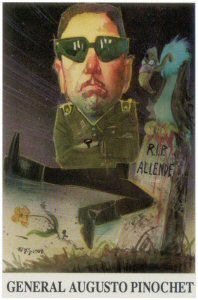
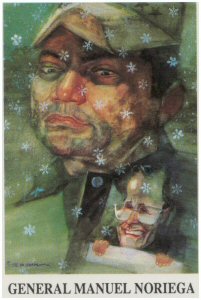
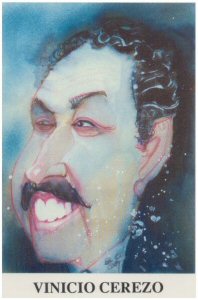
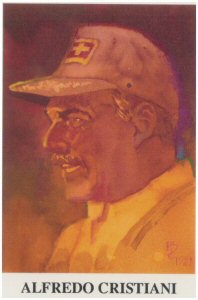
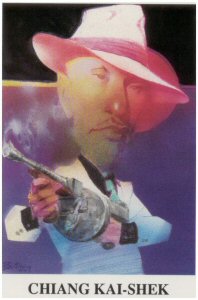
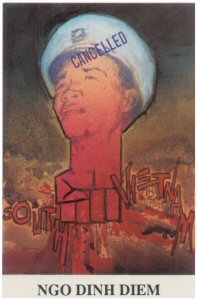
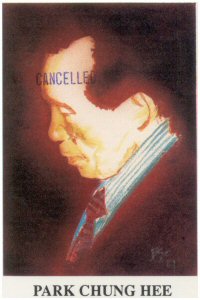
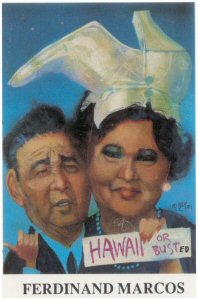
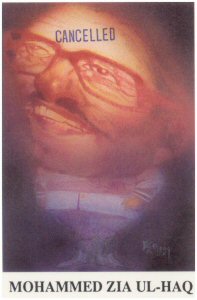
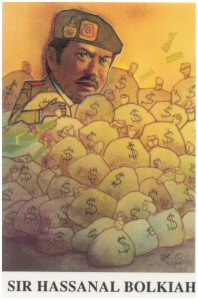
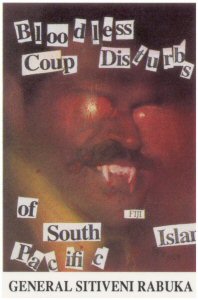
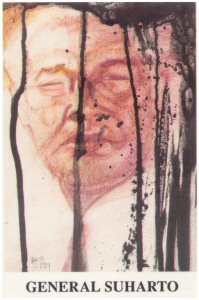
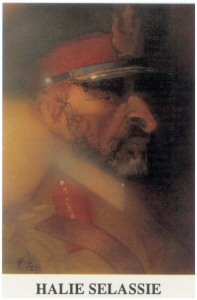
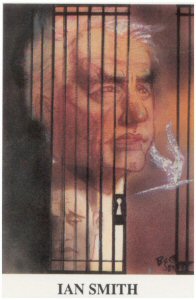
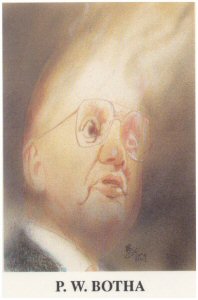
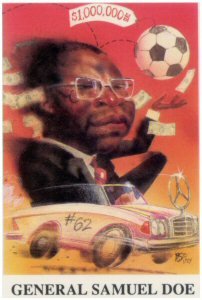
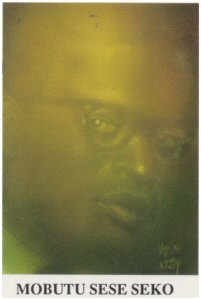
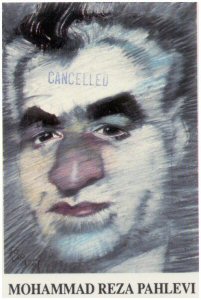
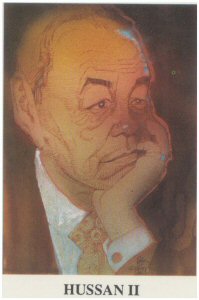
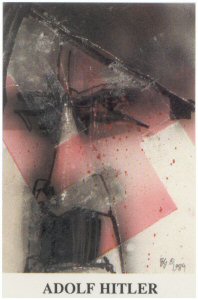
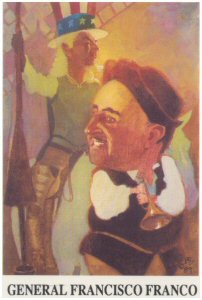
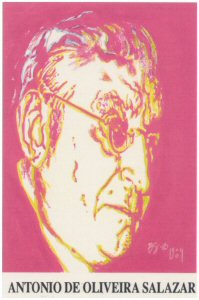
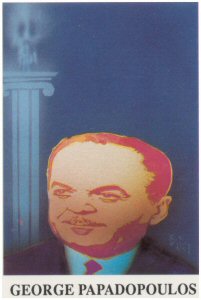
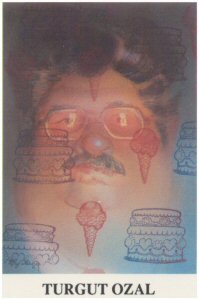

39 comments for “Friendly Dictators”